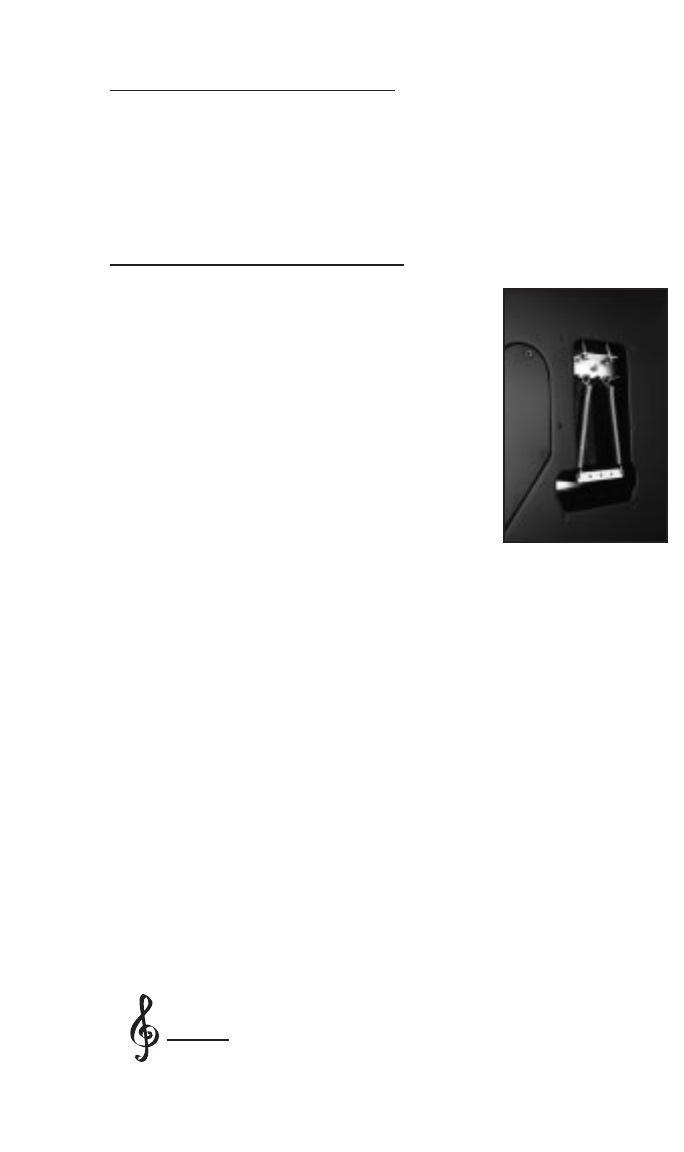
10
Tremolo Bridge Height
Bridge height may be adjusted by means of the bridge
pivot bolts. Turn the pivot bolts clockwise to reduce
bridge height. Turn the pivot bolts counterclockwise to
increase bridge height.
tremolo Bridge Tension
The tension of the tremolo bridge is
set by adjusting the spring tension
screws that hold the spring claw in
place. To gain access to the spring
tension screws and spring claw,
remove the spring cover on the back
of the guitar.
Per Edward’s specification, the
tremolo system is adjusted to rest on
the body surface for maximum sus-
tain and tonality. This will only
allow the strings to be dropped below pitch.
This also ensures tuning stability when using the D-Tuner
™
or when a string breaks. The instrument is equipped with
two springs, which allow proper tension for the string
gauge supplied with the guitar. The extra spring is
enclosed should you prefer to use a heavier string gauge.
Proper tremolo tension is achieved when the bottom of the
tremolo bridge plate rests on the top surface of the guitar
body without requiring excessive force to depress the
tremolo arm.
The tremolo can be adjusted to operate as a floating style
tremolo by loosening the spring tension. Turn the spring
tension screws clockwise to increase the spring tension,
and counterclockwise to decrease the spring tension.
This instrument should be tuned to proper pitch (A-440)
before and after making adjustments.
If the floating tremolo style is desired, it is
recommended that you remove the D-Tuner, as
its operation causes a change in string tension
that will affect the tuning of the other strings. An extra
string lock bolt is enclosed in the case, should the
D-Tuner be removed.
Note


















